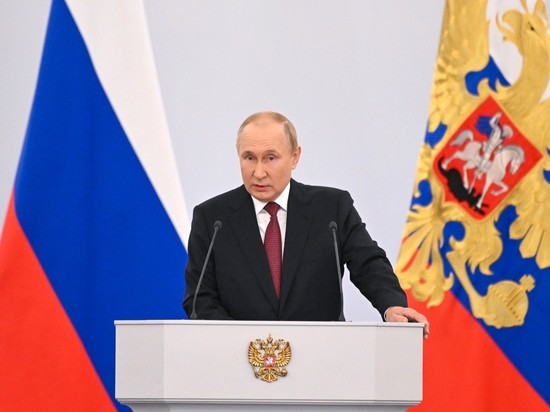The borders of the Russian Federation have become floating
When I was in school, I was not given geometry at all. I could read a paragraph of a textbook ten times in a row and still not get into its content. Last weekend something similar happened to me again. “The limits of the new subjects of the Russian Federation will be determined by the borders that existed on the day of their formation and on the day of their admission to the Russian Federation,” news agencies reported with reference to various official documents.

Photo: kremlin.ru
I read all these documents — the texts of treaties signed by Vladimir Putin, the decisions of the Constitutional Court on this issue — and still did not understand what exactly these phrases mean in practical refraction.
Completely desperate, I decided to wait until Monday morning, when I could start bombarding knowledgeable people with questions. But then it dawned on me: there is no need to wait for anything, and “knowledgeable people” will not be able to help me in any way. I have great respect for the Constitutional Court, the Federal Assembly and other Russian governing bodies. However, in the foreseeable future, the borders of Russia in the Ukrainian direction will not be determined by them. These borders will be determined only by the course of hostilities.
Based on the current Russian legislation, at the time of October 3, 2022 (an important clarification for the current times, when everything flows very quickly and changes very quickly), the city of Nikolaev is part of the territory of Ukraine. But is it possible to imagine Novorossiya without Nikolaev?
Nikolaev is a city founded by order of the first (and only) Governor-General of Novorossiya, Prince Grigory Potemkin. Nikolaev is a city of Russian military glory. Nikolaev is a city where most of the population speaks Russian.
At the very beginning of the special military operation, the battles for this regional center were already conducted within the city limits. However, in the end, Nikolaev has so far remained under the control of official Kiev. But is it possible to imagine that Vladimir Putin is satisfied with such a situation? Of course, you can’t.
Last week, the guru of Russian political analytics Yevgeny Minchenko, relying on a program article by the Commander-in-chief of the Armed Forces of Ukraine Valery Zaluzhny, made a very convincing forecast of the goals and objectives of the two sides of the conflict.
Here are the “wishes” of official Kiev: “The operation to seize the Crimea and mass shelling of the territory of the Russian Federation to a depth of thousands of kilometers, so that the inhabitants of Russia feel the hardships of the war, to strike not at the army, but at the “deep people”. To do this, they need long-range NATO artillery and appropriate shells, as well as continued training and financing of AFU units. At the same time, a strike with tactical nuclear weapons by Russia seems to be a boon for the Ukrainian authorities, since it will turn Russia into a rogue state and ensure its transport blockade.”
What measures will Moscow take to prevent this nightmarish scenario? I quote Yevgeny Minchenko again: “The complete mastery of the territories of the Zaporozhye and Donetsk regions, the cutting off of Ukraine from the Black Sea, the mastery of Nikolaev, Odessa, the Dnieper, Krivoy Rog…
The capture of Kiev and the re-introduction of Russian troops by Belarus is already considered as an option. However, if we are talking about preventing the possibility of shelling Belgorod, then Kharkiv becomes an inevitable target for Russian troops. In general, so far the basic scenario of conflict resolution for both sides is a recipe of “iron and blood”.
If I would like to argue with any of the above forecasts, then only with the word “so far” from the previous sentence.
The recipe for “iron and blood” is the only basic scenario for conflict resolution. On the day of Putin’s solemn speech last Friday, nothing ended. September 30 is just another of the “beginnings” of the conflict, which will redraw the geopolitical map of Eurasia in any way.
Is it possible to put an end to this for now (in this context, the word “so far” is quite appropriate)? Not quite. I have repeatedly quoted my favorite joke: “An optimist in Russia studies English, a pessimist studies Chinese, and a realist studies a Kalashnikov assault rifle.” Everything came true. Therefore, I propose to modernize this joke somewhat, finally removing all the humorous elements from it: realistic-minded political analysts in Russia should study the experience of ending the conflict on the Korean Peninsula in 1953.
This three—year conflict was ended with the signing of an armistice and ceasefire agreement – not a peace treaty. The two Koreas — one with its capital in Pyongyang, the other with its capital in Seoul — still do not recognize the legitimacy of each other’s existence. The two states are separated not by a border, but by a demarcation line that fixes the positions of the parties at the time of signing the ceasefire agreement.
Logic suggests that the real borders of Russia in the Ukrainian direction will be fixed in a very similar way. But until then, for now (and again, the word “bye” is perfectly appropriate here) still very far away.

